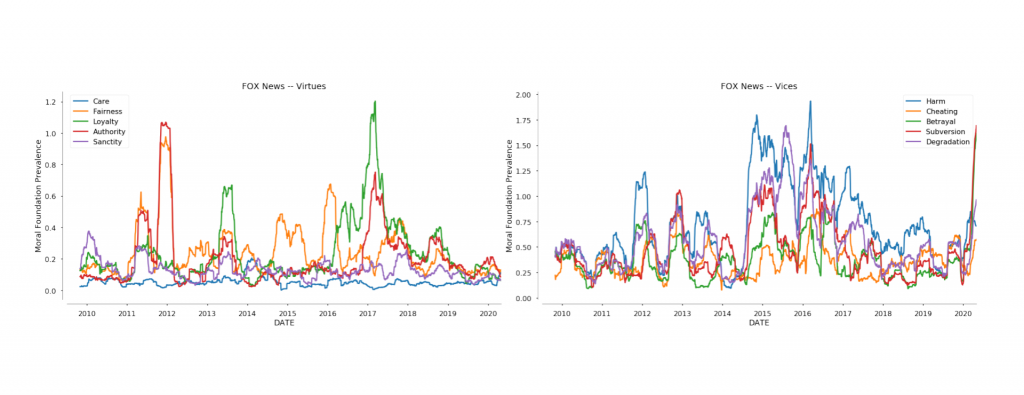Yesterday we released Extended Moral Foundations Dictionary scores for television news. To help you understand how to use these new scores, the team behind the eMFD has released this fantastic scoring guide and Jupyter notebook with an example comparison of moral foundations across CNN, MSNBC and Fox News!
By relying on GDELT's implementation of the extended Moral Foundations Dictionary (https://github.com/
For example, to assess whether particular news stations emphasize particular moral values over others, we can compute the representation of moral virtues (e.g., care, fairness, loyalty, authority, and sanctity) and moral vices (e.g., harm, cheating, betrayal, subversion, and degradation). See this document for an explanation on how to calculate these scores (https://blog.gdeltproject.
Hopp, F.R., Fisher, J. T., & Weber, R. (in press). Dynamic transactions between news frames and sociopolitical events: An integrative, hidden markov model approach. Journal of Communication, 70 (3).
Read The Scoring Guide.
Jupyter Notebook.
Validation Notebook.
